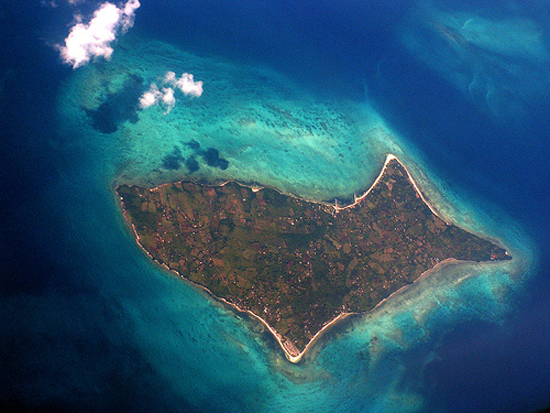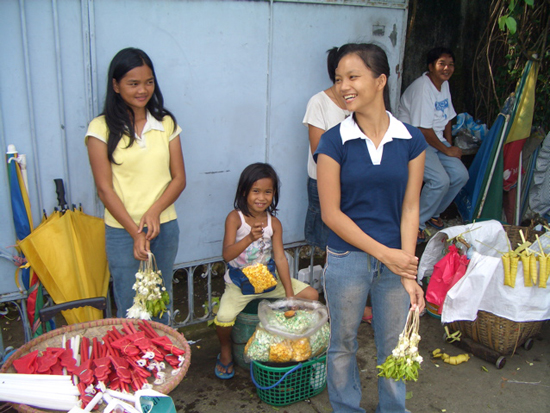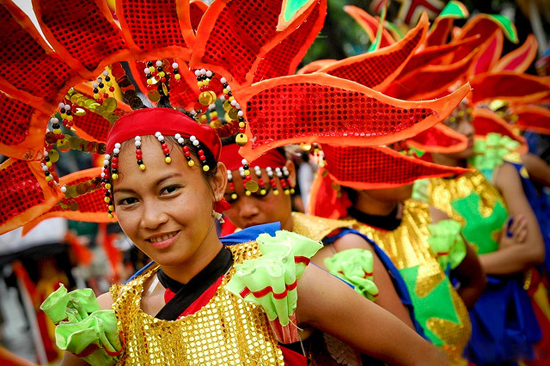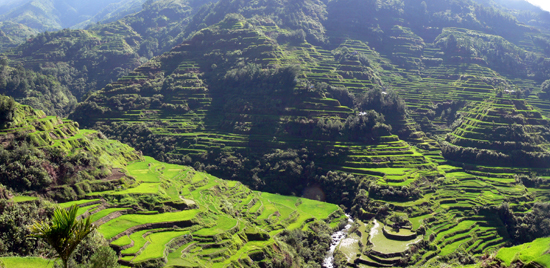Country Snapshot: Country Snapshot
Land/Geography/Regions
The Philippines is an archipelago of more than 7,000 islands off the coast of Southeast Asia in the Pacific Ocean. All the islands are volcanic in origin and many are still active. The 1991 eruption of Mount Pinatubo was one of the largest volcanic events in recorded world history and produced global climatic effects for the following three years. In addition to frequent volcanic activity, natural disasters regularly affecting the islands include seismic activity and tropical typhoons.
The terrain of the Philippines is mountainous with dense rainforest covering many areas. Most islands are uninhabited, with 95 percent of the population living on just 11 islands. The largest of these is Luzon, where the capital city of Manila is found. Luzon also is the location of the Central Luzon Plain, a vast lowland area suitable for agriculture and the largest rice-growing region of the country.
People and Culture
A range of different ethnic groups occupy the islands. The Tagalog, with nearly 30 percent of the total population, are the largest single group and original settlers of the Manila region. Other significant groups include the Cebuano, Ilocano, Bisaya/Binisaya, Hiligaynon Ilonggo, Bikol, and Waray.
Although there are more than 170 languages in use across the country, Filipino and English are the official languages. Filipino is a modern version of the Tagalog language. Eight regional languages are recognized, and Spanish and Arabic are considered “voluntary and optional” languages by the Philippine constitution.
The Philippines is predominantly Christian, with Roman Catholics accounting for about 80 percent of the population. Other Christian faiths and a small number of Muslims make up the rest. While the country is the largest Catholic nation in Asia, groups on the southern island of Mindanao have taken up arms to fight for a separate Islamic state.
The culture of the Philippines is a mixture of East and West. While four centuries of colonization has imparted a distinctly Western character to the nation’s education and civic institutions, the ancient folkways and customs of the native Malay people have lived on. In this melting pot culture, Roman Catholics incorporate ancient rituals of ancestral religions, local-level fiestas meld together Christian liturgical holidays with ancient village festivals, architecture mixes Spanish colonial styles with indigenous nipa hut forms, and traditional forms of song and dance share the stage with Western pop music.
History
There are competing theories about who first settled the Philippines, but evidence suggests a variety of hunting and fishing communities in the region as early as 1000 BCE. As trade took hold with other Asian peoples, each island of the Philippines developed independently. Over the centuries of the precolonial era, these independent polities and kingdoms adopted the Buddhist, Hindu, and Islamic faiths of their trading partners.
Ferdinand Magellan became the first European to visit the region in 1521, but it took another 40 years before Spanish sailors began to build settlements. Spain fought off incursions from the Dutch, Portuguese, and Chinese, but succumbed to a brief period of occupation from the British. Apart from this, Spain governed the country until 1898, when it passed control to the United States for a sum of US$20 million. During its colonization of the Philippines, Spain had introduced Christianity and a European schooling model, developed ports for international trade, and established political unity throughout the islands.
The Philippines were granted the status of commonwealth of the United States, but the movement toward full independence was interrupted by the outbreak of World War II. Japan invaded and occupied the islands until 1945. Following Japanese surrender, the Philippines finally achieved independence and set about the arduous task of rebuilding.
The new country progressed well until the rise of Ferdinand Marcos, who was initially democratically elected as president but later declared martial law and assumed dictatorial powers. The rule of Marcos was hugely unpopular, marked by corruption and human rights abuses. After a few turbulent years, the country returned to a stable democratic trajectory. Heading into the 21st century, the country is challenged by issues including the poverty of a large number of citizens, and rural children's poor access to schools. Additionally, the deadliest typhoon to hit the country occurred in 2013 and caused billions in damages and took over 6,000 lives. The International Criminal Court (ICC) also began investigating the murder of thousands of suspected drug users and criminals, which the president then admitted to as part of his "war on drugs."
Climate and Biodiversity
In general, the Philippines knows three seasons: tag-init or tag-araw is the hot, dry summer of March to May; tag-ulan is the rainy season of June to November; and tag-lamig is the cool, dry season of December to February. However, the effects from the El Niño/La Niña phenomenon can scramble typical seasonal weather conditions. Specific parts of the Philippine archipelago are classified as tropical rainforest, tropical savanna/monsoon, and humid subtropical climate zones depending on the elevation, topography, and geographical orientation.
Owing to its extensive coastlines and rainforests, which support a vast range of flora and fauna, the Philippines is considered one of the world’s 10 most biologically megadiverse countries. Large reptiles include pythons, cobras, and massive saltwater crocodiles. The monkey-eating Philippine eagle is the national bird. More than 100 mammal and 170 bird species are unique to the Philippines. Among the country’s 13,500 species of plants, some 3,200 are unique to the islands.
Economy
Considered an emerging market and once named—along with Indonesia and Thailand—as a Tiger Cub Economy, the Philippines has one of the world’s most rapidly developing economies. The nation is making the transition from a primarily agricultural-based economy to one based on electronics assembly, business processes outsourcing, and other advanced manufacturing, with semiconductors as the largest export. Some experts project yearly gross domestic product (GDP) growth rates of up to 6.5 percent through 2050.
The Philippines joined the World Trade Organization (WTO) in 1995 and is a member of several Asian trade and development organizations. The country sends its exports primarily to the United States, Hong Kong, Japan, China, and Singapore. Imports come from China, followed by Japan, the US, Thailand, and South Korea.
Government
The Philippines is a presidential republic, with a constitution that divides power at the national level between independent executive, legislative, and judicial branches of government. The president is popularly elected, along with a vice president, for a six-year term. The president functions as head of state and head of government, delegating power to ministers and secretaries of the executive branch. Legislative power is vested in a bicameral Congress whose members are popularly elected. The judiciary upholds a mixed legal system of civil, common, Islamic, and customary law. The highest judicial body is the Supreme Court, which operates atop a hierarchy of subordinate courts. Below the level of the national government, the Philippines is divided into 17 regions, which are further subdivided into 81 provinces, 145 cities, 1,489 municipalities, and 42,036 neighborhood barangay (barrios).
Article written for World Trade Press by Paul Giess and David Warfield.
Copyright © 1993—2025 World Trade Press. All rights reserved.

 Philippines
Philippines 



